Cabinet O: Shelf 1
Celadon Wares in Asia
Although Celadon is the term for a translucent crackle glaze applied to porcelain and stoneware, it has come to mean wares that are specifically greenish blue or gray in color, particularly those from China and Korea. The trademark greenish hues of celadon wares were achieved through the use of clays and glazes that contained small amounts of iron, which turns green in a reduction firing atmosphere. (When there is insufficient oxygen in the air in a kiln, oxygen molecules are pulled from the ceramics themselves; it is this change in chemical composition that changes the color of the ware.) The thickness of the glaze and type of clay determine the color after firing, and getting the “right” effect is extremely difficult. The thin watery glaze runs off high points in the design and pools in impressions, creating dazzling gradations in color, especially in incised and molded designs.
Jade was prized in East Asia, and the ability to imitate its color in porcelain was highly valued. In the Goryeo Period (918-1392) in Korea, a celadon ewer or teacup was more precious than gold or silver. The high estimation of celadon was not limited to Korea, but extended to discerning connoisseurs at the court of the Northern Song dynasty (960–1127) in China. Celadon was quite popular in Japan as well, where it was both imported and manufactured in a native version. Celadon is considered by many to have reached its height during the Goryeo period, and these wares continue to be prized by collectors today.
Created For
K-12 EducatorK-12 Student
Museum Visitor
UMMA Docent
UMMA Staff
University Faculty
University Student
Rate this Resource
AVG: 0 | Ratings: 0
& Author Notes
Creative Commons by-nc-saLast Updated
June 8, 2020 12:41 p.m.Report
Reporting Policy
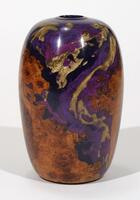
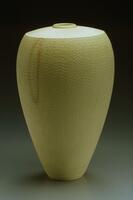
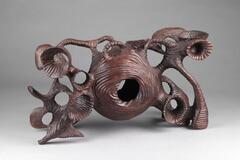

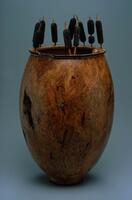

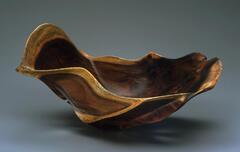
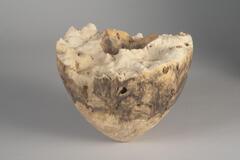

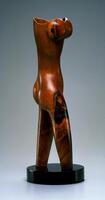

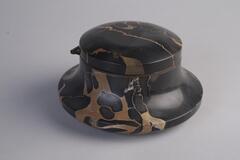

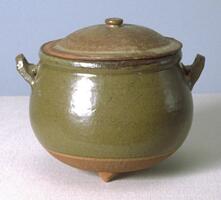
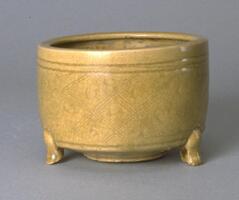
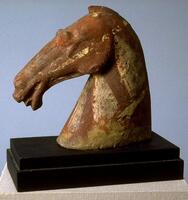


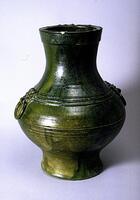
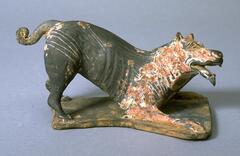
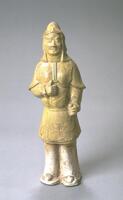

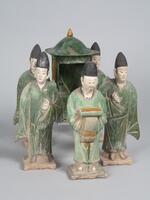
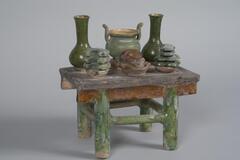

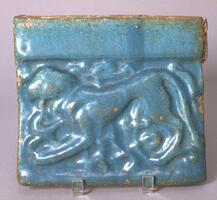
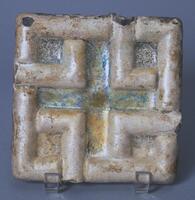
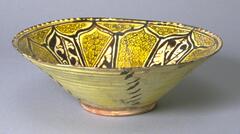
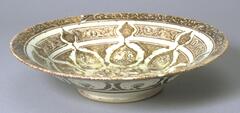
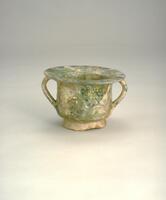
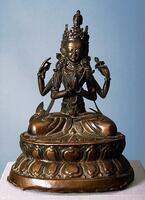

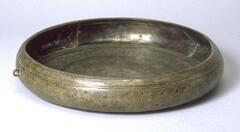
![This jar has a long and upright mouth with a robust shoulder that give way to a body tapering toward the base. The crane, cloud, pine tree and rock are painted with blue and red copper pigment.<br />
<br />
This jar was produced at a kiln in Bunwon-ri, Gwangju-si, Gyeonggi-do after the privatization of official court kilns in 1883. Ten longevity symbols, including pine trees, rocks, lingzhi fungus, deer, cranes, clouds and bamboo, are decorated in cobalt-blue and copper-oxide pigment was used in parts to decorate the jar. Such jars featuring the ten longevity symbols were often used at events such as elder statesmen’s gathering (giroyeon) and 60th birthday parties (hoegabyeon). Crackles were formed on the mouth and body, which are contaminated with impurities, but it remains intact overall. The foot retains traces of coarse sand supports, but lots of cracks were formed.<br />
[Korean Collection, University of Michigan Museum of Art (2014) p.169] This jar has a long and upright mouth with a robust shoulder that give way to a body tapering toward the base. The crane, cloud, pine tree and rock are painted with blue and red copper pigment.<br />
<br />
This jar was produced at a kiln in Bunwon-ri, Gwangju-si, Gyeonggi-do after the privatization of official court kilns in 1883. Ten longevity symbols, including pine trees, rocks, lingzhi fungus, deer, cranes, clouds and bamboo, are decorated in cobalt-blue and copper-oxide pigment was used in parts to decorate the jar. Such jars featuring the ten longevity symbols were often used at events such as elder statesmen’s gathering (giroyeon) and 60th birthday parties (hoegabyeon). Crackles were formed on the mouth and body, which are contaminated with impurities, but it remains intact overall. The foot retains traces of coarse sand supports, but lots of cracks were formed.<br />
[Korean Collection, University of Michigan Museum of Art (2014) p.169]](/media/W1siZiIsIjIwMjIvMDUvMjUvNjdqd3QzZzEybV9kZWZhdWx0LmpwZyJdLFsicCIsInRodW1iIiwiMjQweDIwMCJdXQ?sha=fecc2783f3328016)
![It has a long, thin neck and flat oval body. The wide foot is rather shallow but deeply recessed on the underside. The entire of surface is decorated with peony blossom design printed in cobalt blue sigment.<br />
<br />
This is a long-necked white porcelain bottle with peony sprays wrapping around the entire body. The white porcelain background is bright in colour, while the light and dark contrasts of the peony pattern give its flowers a three-dimensional appearance. There are sand spur marks on the foot, and on the outer base are incised symbols. Such marks are found in the waste deposits of kilns in Bunwonri, Gwangju-gun, Gyeonggi-do at the end of the 19th century. The mouth has been severed lost. This is a high-quality white porcelain bottle, with well sintered clay and glaze, but the rim has been severed and lost.<br />
[Korean Collection, University of Michigan Museum of Art (2014) p.179] It has a long, thin neck and flat oval body. The wide foot is rather shallow but deeply recessed on the underside. The entire of surface is decorated with peony blossom design printed in cobalt blue sigment.<br />
<br />
This is a long-necked white porcelain bottle with peony sprays wrapping around the entire body. The white porcelain background is bright in colour, while the light and dark contrasts of the peony pattern give its flowers a three-dimensional appearance. There are sand spur marks on the foot, and on the outer base are incised symbols. Such marks are found in the waste deposits of kilns in Bunwonri, Gwangju-gun, Gyeonggi-do at the end of the 19th century. The mouth has been severed lost. This is a high-quality white porcelain bottle, with well sintered clay and glaze, but the rim has been severed and lost.<br />
[Korean Collection, University of Michigan Museum of Art (2014) p.179]](/media/W1siZiIsIjIwMjIvMDUvMjUvNm53OGhsdGg5cl9kZWZhdWx0LmpwZyJdLFsicCIsInRodW1iIiwiMjQweDIwMCJdXQ?sha=b31b27d59eab8bb0)

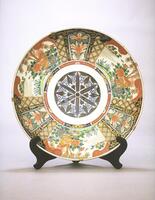
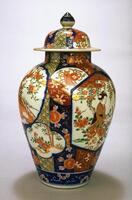

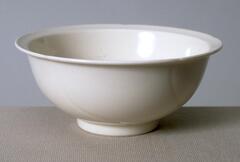

![<p>The inner base and walls of this celadon dish are mold-impressed with a peony and peony scrolls, respectively. The low foot retains traces of quartzite supports in three places. The glaze is poorly fused, showing traces of its running, while partial oxidization has given the dish a yellow-green hue in parts.<br />
[<em>Korean Collection, University of Michigan Museum of Art </em>(2014) p.114]</p>
The rim of this celadon saucer is outward flared. Fine crackles are present throughout the surface of the saucer, coated with a dark bluish green glaze. It has glazed short foot with 3 spur marks and is molded peony design on wall and bottom. The exterior glaze color change due to over heating, fired in sagger that was not tightly closed. <p>The inner base and walls of this celadon dish are mold-impressed with a peony and peony scrolls, respectively. The low foot retains traces of quartzite supports in three places. The glaze is poorly fused, showing traces of its running, while partial oxidization has given the dish a yellow-green hue in parts.<br />
[<em>Korean Collection, University of Michigan Museum of Art </em>(2014) p.114]</p>
The rim of this celadon saucer is outward flared. Fine crackles are present throughout the surface of the saucer, coated with a dark bluish green glaze. It has glazed short foot with 3 spur marks and is molded peony design on wall and bottom. The exterior glaze color change due to over heating, fired in sagger that was not tightly closed.](/media/W1siZiIsIjIwMjIvMDkvMjQvM2I3YWQ3MmZ2OF9kZWZhdWx0LmpwZyJdLFsicCIsInRodW1iIiwiMjQweDIwMCJdXQ?sha=43157896c18036d2)
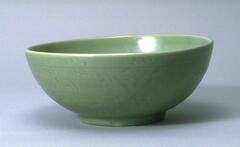
![<p>This vessel was produced in a form typical of 13th century celadon bottles with the beautifully curved form and inlaid decorations on the entire surface. The body is divided into six segments, each of which is inlaid with chrysanthemum stems rst then stamped with owers using the inhwa (stamping) technique. Glaze was wiped away from the base and sand supports were used during ring. Glaze on the lower part of the bottle was poorly fused, yielding an opaque surface, however the overall quality of sintering is fine. The mouth has been repaired and restored. This piece is assumed to have been produced at a kiln at Yucheon-ri, Buan-gun, Jeollabuk-do.<br />
[<em>Korean Collection, University of Michigan Museum of Art</em> (2014) p.136]</p>
<p>This vessel was produced in a form typical of 13th century celadon bottles with the beautifully curved form and inlaid decorations on the entire surface. The body is divided into six segments, each of which is inlaid with chrysanthemum stems rst then stamped with owers using the inhwa (stamping) technique. Glaze was wiped away from the base and sand supports were used during ring. Glaze on the lower part of the bottle was poorly fused, yielding an opaque surface, however the overall quality of sintering is fine. The mouth has been repaired and restored. This piece is assumed to have been produced at a kiln at Yucheon-ri, Buan-gun, Jeollabuk-do.<br />
[<em>Korean Collection, University of Michigan Museum of Art</em> (2014) p.136]</p>](/media/W1siZiIsIjIwMjIvMDkvMjQvOTlvajVlZGNtbl9kZWZhdWx0LmpwZyJdLFsicCIsInRodW1iIiwiMjQweDIwMCJdXQ?sha=15576c14322f15fc)
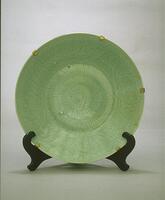
![<p>The long neck, curvilinear body, and ared mouth of this vessel create a typical Goryeo celadon bottle. A band of lotus petals inlaid with black and white slips is wrapped around the lower part of the neck, below which is a yeoui-head band inlaid with white slip. Three places around the belly of the bottle are decorated with lotus sprays inlaid with black and white slips. The glaze on the lower part of the body has been oxidized, where it is also extensively cracked. The foot is low, with a wide rim, and has sand spur marks.<br />
[Korean Collection, University of Michigan Museum of Art (2014) p.143]</p>
<p>The long neck, curvilinear body, and ared mouth of this vessel create a typical Goryeo celadon bottle. A band of lotus petals inlaid with black and white slips is wrapped around the lower part of the neck, below which is a yeoui-head band inlaid with white slip. Three places around the belly of the bottle are decorated with lotus sprays inlaid with black and white slips. The glaze on the lower part of the body has been oxidized, where it is also extensively cracked. The foot is low, with a wide rim, and has sand spur marks.<br />
[Korean Collection, University of Michigan Museum of Art (2014) p.143]</p>](/media/W1siZiIsIjIwMjIvMDkvMjQvMXFmdnRueTRuNl9kZWZhdWx0LmpwZyJdLFsicCIsInRodW1iIiwiMjQweDIwMCJdXQ?sha=0ca4162fd5e5e61f)
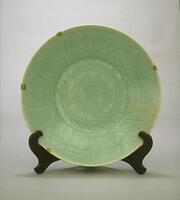
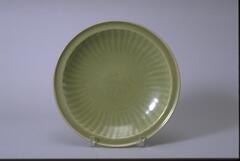
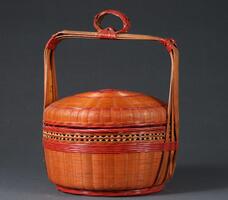
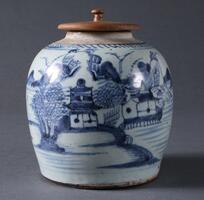
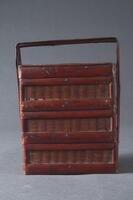
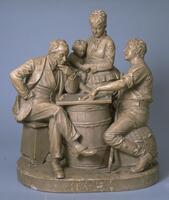

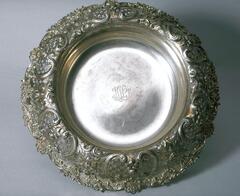
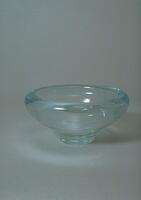
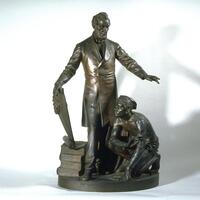
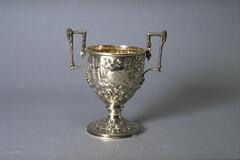
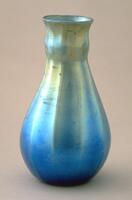
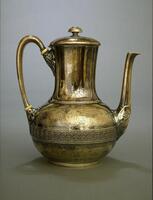
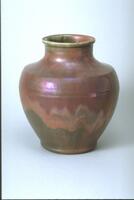
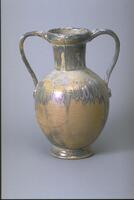

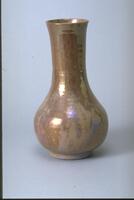

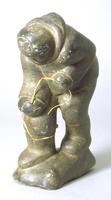
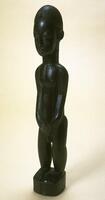


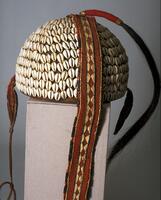



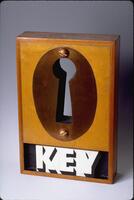
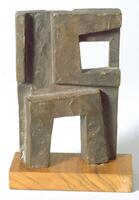


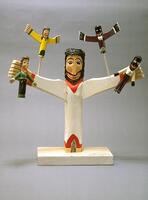




![<p>The cup has a mouth that curves slightly inwards; this is a form typical of round cups with saucers produced in large numbers in the 13th and 14th centuries. The cup is decorated only on the outer rim with a fret-patterned band. Repaired damage is visible on several parts on the mouth, as well as cracking that occurred during ring. Glaze has been applied down to the foot, and three quartzite spur marks remain on the outer base. The partially oxidized body displays darker patches on the surface, but it preserves a bright celadon color overall.<br />
[<em>Korean Collection, University of Michigan Museum of Art </em>(2014) p.120]</p>
The celadon cup has a mildly inverted rim with curved sides that are bent once, at a sharp angle, near the base. The surface is coated with a greenish blue glaze. The slightly inward-turning mouth facilitates drinking while the sides curve gently toward the base. <p>The cup has a mouth that curves slightly inwards; this is a form typical of round cups with saucers produced in large numbers in the 13th and 14th centuries. The cup is decorated only on the outer rim with a fret-patterned band. Repaired damage is visible on several parts on the mouth, as well as cracking that occurred during ring. Glaze has been applied down to the foot, and three quartzite spur marks remain on the outer base. The partially oxidized body displays darker patches on the surface, but it preserves a bright celadon color overall.<br />
[<em>Korean Collection, University of Michigan Museum of Art </em>(2014) p.120]</p>
The celadon cup has a mildly inverted rim with curved sides that are bent once, at a sharp angle, near the base. The surface is coated with a greenish blue glaze. The slightly inward-turning mouth facilitates drinking while the sides curve gently toward the base.](/media/W1siZiIsIjIwMjIvMDkvMjQvMmRjZTRvbXNlel9kZWZhdWx0LmpwZyJdLFsicCIsInRodW1iIiwiMjQweDIwMCJdXQ?sha=b6f3e998b597b135)
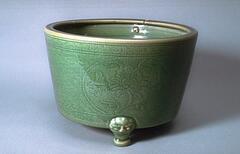
![A yellow brownish glaze is applied and crackling covers the entire body.<br />
This bowl has straight wall. The exterior is carved with lotus petals. The below of the mouth is decorated with fret design. The foot is a little low.
<p>This is a cylindrical cup decorated with incised and raised design of lotus petals on the entire outer walls and is fretted on the outer rim. Overall, the cup is yellow-green in color and has three refractory spur marks. Many of the shards, excavated from sediment in the vicinity of Kiln no. 12 at Yucheon-ri, Buan-gun, Jeollabuk-do, are also those of cylindrical cups similar in form to this one.<br />
[<em>Korean Collection, University of Michigan Museum of Art </em>(2014) p.123]<br />
</p>
A yellow brownish glaze is applied and crackling covers the entire body.<br />
This bowl has straight wall. The exterior is carved with lotus petals. The below of the mouth is decorated with fret design. The foot is a little low.
<p>This is a cylindrical cup decorated with incised and raised design of lotus petals on the entire outer walls and is fretted on the outer rim. Overall, the cup is yellow-green in color and has three refractory spur marks. Many of the shards, excavated from sediment in the vicinity of Kiln no. 12 at Yucheon-ri, Buan-gun, Jeollabuk-do, are also those of cylindrical cups similar in form to this one.<br />
[<em>Korean Collection, University of Michigan Museum of Art </em>(2014) p.123]<br />
</p>](/media/W1siZiIsIjIwMjIvMDkvMjQvNWU0NDFuZ3Nuc19kZWZhdWx0LmpwZyJdLFsicCIsInRodW1iIiwiMjQweDIwMCJdXQ?sha=243d2e8e37f3b830)
![It has a flat round shaped-body and a rim in the shape of a hemisphere. The foot is small and low-rising. The shoulder is adorned with cloud.<br />
<br />
This celadon oil bottle has a short neck and round body. A cloud design is incised on the shoulder of the bottle. The rim of the foot has three refractory spur marks. This is a good example of a Goryeo celadon oil bottle in terms of both glaze and form.<br />
[<em>Korean Collection, University of Michigan Museum of Art </em>(2014) p.130]<br />
It has a flat round shaped-body and a rim in the shape of a hemisphere. The foot is small and low-rising. The shoulder is adorned with cloud.<br />
<br />
This celadon oil bottle has a short neck and round body. A cloud design is incised on the shoulder of the bottle. The rim of the foot has three refractory spur marks. This is a good example of a Goryeo celadon oil bottle in terms of both glaze and form.<br />
[<em>Korean Collection, University of Michigan Museum of Art </em>(2014) p.130]<br />
](/media/W1siZiIsIjIwMjIvMDUvMjUvODY0bXdvbDk2eF9kZWZhdWx0LmpwZyJdLFsicCIsInRodW1iIiwiMjQweDIwMCJdXQ?sha=463cbf36846c29c9)

![<p>This type of bowls was produced in the 12th century when the production of celadon was increased. is piece is assumed to be a product of a kiln in Sadang-ri, Gangjin-gun, Jeollanam-do. e outer wall is decorated with incised and raised deisgn of a two- tiered lotus petal. The bowl was entirely glazed including the rim of the foot. e outer base retains three white quartzite spur marks. e glaze is fused well, displaying a ne gloss, but parts of it have been oxidized to tinge the inner surface with yellow.<br />
[<em>Korean Collection, University of Michigan Museum of Art </em>(2014) p.102]</p>
<p>This type of bowls was produced in the 12th century when the production of celadon was increased. is piece is assumed to be a product of a kiln in Sadang-ri, Gangjin-gun, Jeollanam-do. e outer wall is decorated with incised and raised deisgn of a two- tiered lotus petal. The bowl was entirely glazed including the rim of the foot. e outer base retains three white quartzite spur marks. e glaze is fused well, displaying a ne gloss, but parts of it have been oxidized to tinge the inner surface with yellow.<br />
[<em>Korean Collection, University of Michigan Museum of Art </em>(2014) p.102]</p>](/media/W1siZiIsIjIwMjIvMDkvMjQvOWVvOXU2emZncV9kZWZhdWx0LmpwZyJdLFsicCIsInRodW1iIiwiMjQweDIwMCJdXQ?sha=413a02bc2a8a0993)

